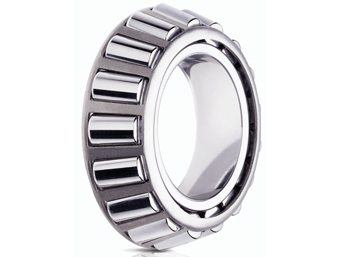Metric Single Row
Single row tapered roller bearings are designed to accommodate combined loads, i.e. radial and axial loads acting simultaneously, the extended lines of the raceways meet at the same point on the bearing axis to achieve true rolling and therefore have low Frictional moment, the axial load capacity of tapered roller bearings increases with the contact angle α. The size of the contact angle, usually between 10° and 30°, is related to the calculation coefficient e: the larger the value of e, the larger the contact angle.
Bearing characteristics:
low friction
The optimized roller design and rib surface finish on the rib promotes the formation of a lubricant film, which reduces friction, which also reduces frictional heat and flange wear, in addition, the bearing maintains better preload and reduces Noise level during operation.
long lasting
The basic design of the bearing and crown raceway logarithmic raceway shape optimizes load distribution along the contact surface, reduces stress peaks at the roller ends, and reduces sensitivity to misalignment and shaft deflection with a conventional straight line.
Improve operational reliability
The optimized surface treatment of the contact surfaces of the rollers and raceways facilitates the formation of a hydrodynamic lubricant film.
Consistency of roller profiles and dimensions
The rollers integrated in tapered roller bearings are manufactured to such close tolerances and dimensional accuracy that they are nearly identical, which provides optimum load distribution, reduces noise and vibration levels, and enables better preload.
Rigid Bearing Applications
A single row tapered roller bearing usually needs to be adjusted in conjunction with another tapered roller bearing, and by applying preload, rigid bearing applications can be achieved.
Separable and interchangeable
That is, the inner ring with the roller and cage assembly (inner ring assembly) can be installed separately from the outer ring. In addition, the separable parts are interchangeable, which facilitates installation, removal and maintenance inspection procedures.

![[Page Title]](/template/default/static/picture/Eng-Bearings_Bnaner_68.jpg)
